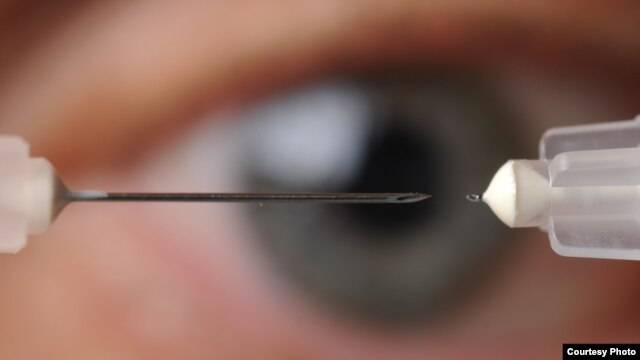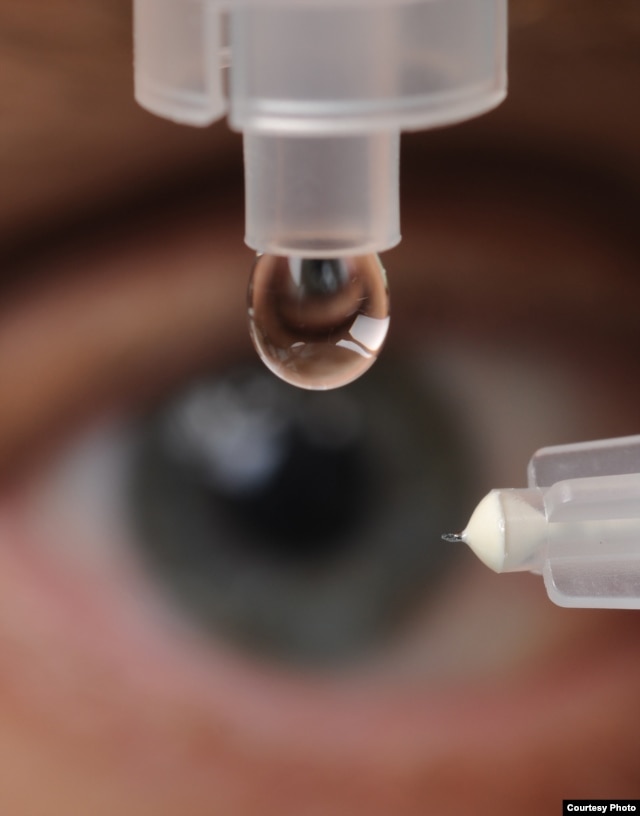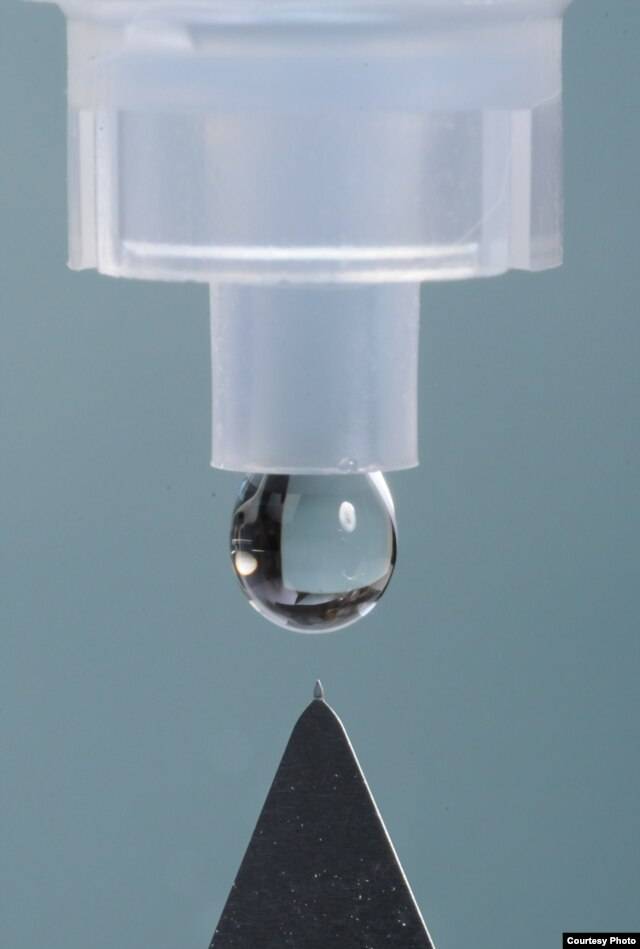Navigation
Install the app
How to install the app on iOS
Follow along with the video below to see how to install our site as a web app on your home screen.

Note: This feature currently requires accessing the site using the built-in Safari browser.
More options
You are using an out of date browser. It may not display this or other websites correctly.
You should upgrade or use an alternative browser.
You should upgrade or use an alternative browser.
Get your eyes checked!
- Thread starter Luddly Neddite
- Start date
Mr. H.
Diamond Member
Thank you. Evidently, I'm on someone's "ignore".I haveseen no "floaters" since mine.

A poke inna eye to treat glaucoma...
Tiny Needles Treat Eye Disease
November 14, 2014 ~ Tiny needles - too small to be seen by the naked eye - may one day offer an effective treatment for eye diseases, including glaucoma, the second-leading cause of blindness around the world.
Tiny Needles Treat Eye Disease
November 14, 2014 ~ Tiny needles - too small to be seen by the naked eye - may one day offer an effective treatment for eye diseases, including glaucoma, the second-leading cause of blindness around the world.
Glaucoma is marked by increased pressure in the eye caused by an over-production of fluid. While it can be controlled with daily eye drops that either reduce the fluid, increase the flow of tears from the eye or both, studies show only 56 percent of patients use the drops every day. If doctors need to inject medicine into the eye for other conditions, they routinely use a hypodermic needle, but that can be uncomfortable for the patient. Now, incredibly tiny needles, about 0.4 to 0.7 millimeters long, can penetrate the eye only as far as needed to deliver the treatment - painlessly and efficiently.

A microneedle used to inject glaucoma medications into the eye is shown next to a conventional hypodermic needle.
Its developers foresee time-release drugs injected every three to six months to replace daily glaucoma eye drops. The so-called microneedles could easily replace hypodermic needles for injections into the front of the eye. According to Mark Prausnitz, Director of the Center for Drug Design, Development and Delivery at Georgia Institute of Technology, the tiny needles are a better drug delivery vehicle than an eye dropper, which can flood the eye with medicine. “What the microneedle enables is a very targeted delivery to put the drug in the spot where it needs to be within the eye so that the drug is as potent and effective as possible," said Prausnitz, who helped develop the microneedles along with researchers at Emory University. "And the drug doesn’t go to other places in the eye where it can cause side effects."

A microneedle used to inject glaucoma medications into the eye is shown next to a liquid drop from a conventional eye dropper.
And being able to target the drug means that less medicine is needed. The microneedles are either hollow like a regular hypodermic needle, or they are coated with a drug which dissolves into the eye. In tests with mice, Prausnitz says the tiny needles were effective in treating glaucoma as well as corneal neovascularization, which is the growth of unwanted blood vessels. “One was a glaucoma drug where we were able to control the pressure inside of the eye," he said. "The other was a drug that stops blood vessel growth. And so when there was abnormal blood vessel growth going into the cornea due to an injury, we were able to administer that drug and suppress the blood vessel growth."

A solid microneedle coated with medication for delivery into the cornea is shown next to a liquid drop from a conventional eye dropper.
Prausnitz also says some people may find the microneedles uncomfortable despite their miniscule size, so a topical anesthetic could be used to deaden the pain. A biomedical company is already testing the hollow needle to reduce inflammation in the back of the eye that can be treated from the front. The solid needle for treatment of glaucoma is still undergoing development. An article on the tiny needle technology is published in the journal Investigative Ophthalmology and Visual Science.
Tiny Needles Treat Eye Disease
I have developed diabetic retinopathy and had one treatment where something was injected into my eye - painless and only a very slight feeling of pressure for less than 24 hours.
Going back Thursday to have laser treatment - in and out, no sweat.
Going back Thursday to have laser treatment - in and out, no sweat.
Roadrunner
Roadrunner
You wonder what planet some of these humourless dolts come from.One I get rid of my cataract, I'm shopping for a Rincoln Continental.
So what is Rincoln Continental
.
Cataract = Cadillac
Rincoln Continental = Lincoln Continental
Darlene
Silver Member
I had an eye exam a few weeks ago and finally got the right prescription. Now I'm practically blind without my glasses.
auditor0007
Gold Member
My better half is having cataract surgery, first eye tomorrow, other one in two weeks so, we're traveling to the bid city today.
Its amazing how much cataract surgery has changed and improved. When I first heard of it, a gazillion years ago, the patient would have to lay on their back all day with sandbags holding their head in place.
Now, its a quick out patient procedure and we think we have a very competent surgeon.
One minus is that although insurance/Medicare pays more under ObamaCare than before, there is still out of pocket to be paid. Worth it though. What is more valuable than your eyesight? I read a poll where people said the only thing more important to them is their life. I agree.
Have a nice day, y'all.
Who said your other half is better? LOL My father had this surgery a few years ago. He was able to stop wearing his glasses and had near perfect vision after the surgery. Because my mother was so used to him wearing the glasses, she made him keep wearing them anyway. He had to get a pair with just glass in them with no corrective lens.
Similar threads
- Replies
- 2
- Views
- 114
- Replies
- 3
- Views
- 82
- Replies
- 2
- Views
- 104
- Replies
- 9
- Views
- 497
Latest Discussions
- Replies
- 188
- Views
- 1K
- Replies
- 10
- Views
- 58
- Replies
- 8
- Views
- 58
Forum List
-
-
-
-
-
Political Satire 8040
-
-
-
-
-
-
-
-
-
-
-
-
-
-
-
-
-
-
-
ObamaCare 781
-
-
-
-
-
-
-
-
-
-
-
Member Usernotes 469
-
-
-
-
-
-
-
-
-
-
